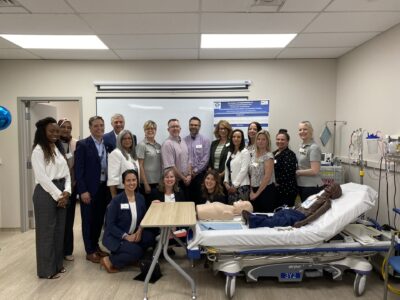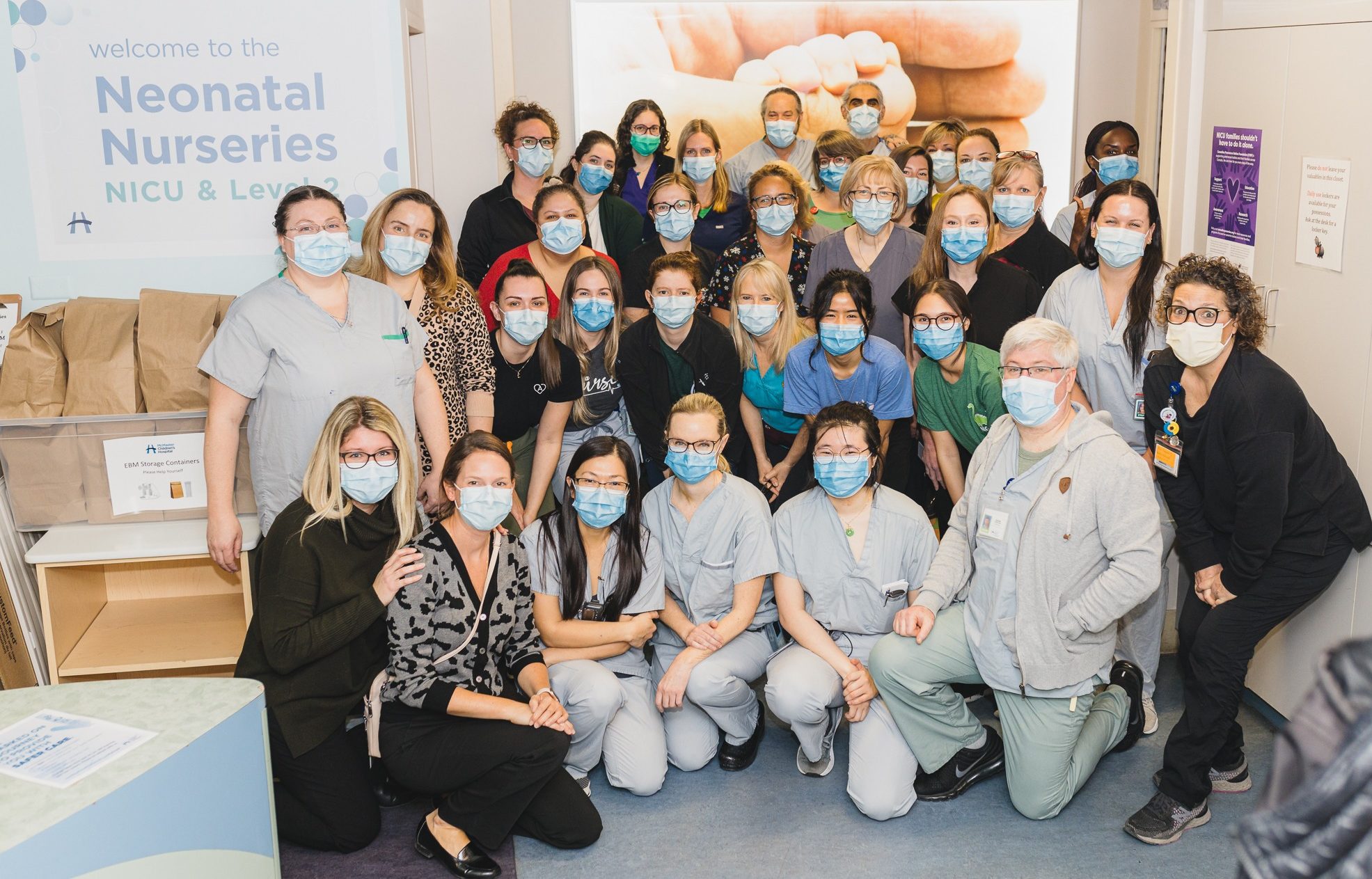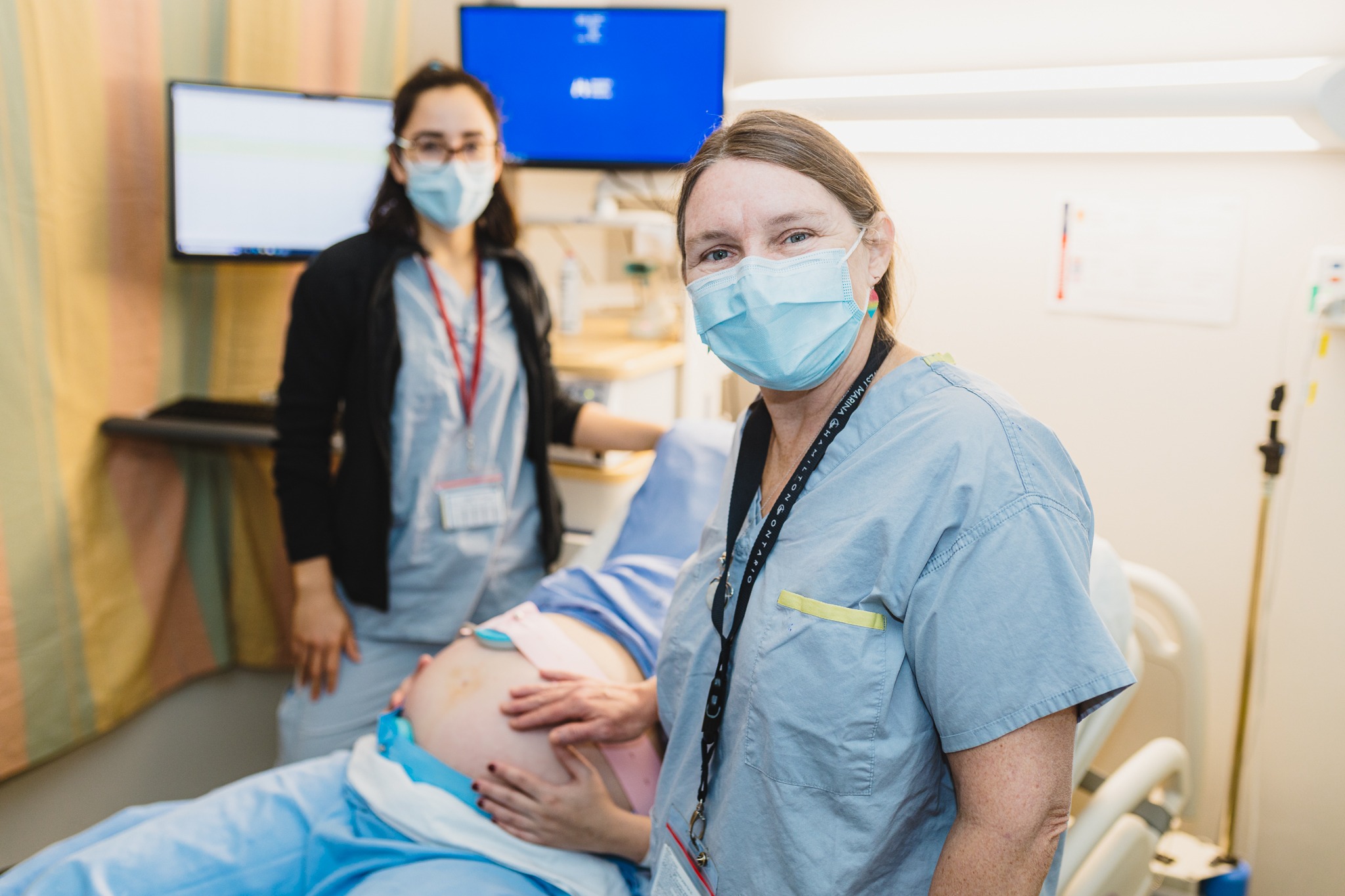
Life-like simulations in new training centre advance children’s care at MCH
Hamilton Health Sciences’ McMaster Children’s Hospital (MCH) is proud to announce the opening of our Simulation, Resuscitation and Outreach Center (SiROC).

Staff from MCH, HHSF and the LCBO celebrate the opening of the new simulation and resuscitation centre.
Generously funded by the LCBO, this revolutionary facility will play a pivotal role in helping MCH empower more health-care professionals across the region with life-saving training, knowledge and skills. The LCBO’s $530,000 investment in significant renovations and cutting-edge instructional equipment will expand the offerings and capacity of SiROC’s programming.
“We are proud to support McMaster Children’s Hospital through our annual holiday campaign, Give a Gift that Makes a Difference,” says George Soleas, President and CEO of the LCBO.
“It’s through the 8,000 passionate people who work at our LCBO stores across Ontario that we harness the generosity of our customers and give back to the communities where we live and work,” adds Lori-Ann Romano, the LCBO’s Regional Director.
Enhanced training opportunities

Denise Johnson
Renovations to a dedicated classroom space at MCH have facilitated an expansion of vital training opportunities for a greater number of frontline staff. The increased course offerings equip medical professionals with essential competencies to respond to urgent and emergent resuscitation needs.
“The reach is far greater than just MCH,” says Denise Johnson, senior manager of patient safety at the hospital.
Outreach training sessions have included community partners across the region. To date, SiROC has provided training to over 1,000 participants and the program is now being replicated in other hospitals across Canada. Training and refreshers provided include:
- Clinical skills
- Basic and advanced life support
- Tracheostomy care
- Neonatal and pediatric resuscitation
- CPR
- Management of ventilation
- Pediatric advanced life support
- Pediatric emergency assessment, recognition and stabilization
State-of-the-art equipment

SiROC program coordinator Rahil Kassim (right) instructs a guest from the LCBO regarding new training equipment for infant resuscitation.
The LCBO’s funding has also purchased innovative teaching equipment, expanding the scope of simulation-based learning at McMaster Children’s Hospital. These resources enable life-like simulations and hands-on practice that prepare staff to respond to critical medical situations. For example, staff can practice chest compressions with live feedback on the efficacy of their force and frequency.
The addition of a dark-skinned child patient simulator allows staff to learn to recognize signs of distress like bed sores on dark skin. The manikin can also simulate various medical conditions, like the sound of lungs with pneumonia, for a realistic training experience for health-care providers.
Multidisciplinary collaboration

Serena Lazdins, incoming SiROC program lead, demonstrates some training tools.
The SiROC program has fostered an extensive partnership with the pediatric intensive care unit transport team. Weekly skills stations and simulations provide the team with valuable training opportunities, helping them hone their skills and prepare for certification exams.
“Ensuring good team dynamics is key,” affirms Dr. Shimaa Nassif, the outgoing SiROC program coordinator who is joining the pediatric resident team at MCH. This collaboration ensures a multidisciplinary approach, promoting teamwork and communication among health-care professionals.
Transformational gift
Through high-quality equipment, increased course offerings, and collaborative initiatives, the LCBO’s gift will enhance the knowledge, abilities and confidence of medical professionals and have a lasting impact on pediatric health care across the Greater Hamilton Region.

Pearl Veenema
“I am immensely grateful for the opportunities we get at Hamilton Health Sciences Foundation to connect passionate people with meaningful opportunities to make a difference in their community,” says Pearl Veenema, the Foundation’s CEO. “Together, we are unlocking new possibilities, reinforcing the vital role collaboration plays in delivering exceptional child and youth health care.”
While the provincial government funds hospital salaries and operating costs, and contributes to capital projects, donors fund the equipment used to diagnose, treat and care for patients – from replacing the most basic necessities to investing in sophisticated new technologies.
Republished from the Hamilton Health Sciences Foundation.






